Social media has become an essential tool for businesses in today’s digital era for reaching and engaging with their target audience.
Companies must have a solid social media plan in place to stand out and drive business. In this blog, we will lay out a step-by-step plan for gaining followers, likes, and company through social media marketing in 2023.
We’ll go over each major social media site and provide tips and tricks for optimizing profiles, creating effective content, and running successful advertising campaigns.
Build your Social Media Persona

Before we dive into the specifics of each platform, it’s important to have a solid social media strategy in place.
A social media strategy is a plan that details how a company will use social media to accomplish its objectives. Identifying target groups, developing a content calendar, establishing goals and KPIs, and monitoring and analyzing data are all part of this process.
1. Identify Target Audiences
Identifying your target audience is the first stage in developing a social media strategy. Who do you hope to approach through your social media content?
What are their hobbies, habits, and demographics?
Understanding your target audience allows you to produce content that will resonate with them and drive engagement and business.
Companies, for example, may target students, instructors, parents, or administrators. It is critical to producing content that speaks to and provides value to each of these groups.
2. Create a Content Calendar
After you’ve identified your target audiences, you should develop a content calendar. A content calendar is a list of the posts you intend to make on your social media platforms.
It should include the type of content, the date and time it will be published, as well as any correlated images or links.
A content calendar allows you to remain organized while also ensuring that you are consistently posting high-quality content that is consistent with your overall social media strategy.
3. Set Goals and KPIs
Setting goals and key performance indicators (KPIs) is an essential part of any social media strategy.
Goals are what you want your social media content to accomplish, such as increasing company awareness or driving sales.
KPIs are metrics that will be used to assess the success of your social media activities, such as engagement rate or conversion rate.
It is critical to make goals and KPIs precise, measurable, achievable, relevant, and time-bound when developing them. (SMART). This will assist you in remaining focused and tracking your development over time.
4. Track and Analyze Data
Finally, tracking and analyzing data is crucial for any social media strategy. This includes tracking engagement rates, follower growth, and website traffic from social media channels.
By analyzing this data, you can identify what’s working and what’s not, and make adjustments to your social media strategy as needed.
Understand Platforms & How it Works?
1. Facebook

Facebook is one of the most popular social media platforms, with over 2.8 billion yearly active druggies. It’s a great platform for companies to reach a wide followership and make connections with their target followership.
Then are some tips for optimizing your Facebook presence
1. Optimize Your Profile
Your Facebook profile is the first thing people will see when they come across your runner.
Make sure it’s complete and to date, including your profile picture, cover print, and memoir.
Use high-quality illustrations that align with your brand and give a clear description of what your company does.
2. Use a Mix of Content Types
Facebook supports a variety of content types, including textbook posts, prints, Videos, and live videos. Use a blend of these content types to keep your followership engaged and interested. trial with different content types to see what resonates with your followership.
videotape content will be more appreciated.
3. Create Engaging Content
Your Facebook content should be engaging and give value to your target followership.
Share instructional papers, educational coffers, and assiduity news.
Ask questions and encourage exchanges with your followers.
4. Running Facebook Ads
Ads can be a great way to reach targeted followership and drive business.
Use Facebook Advertisements director to produce and run advertisements that align with your social media strategy. trial with different announcement formats and targeting options to find what works best for your company.

1. Define your campaign objective:

The first step in creating a successful Facebook Ads campaign is to define your objective.
This could be increasing brand awareness, driving website traffic, generating leads, or boosting sales. Your objective will determine your targeting, ad format, and budget.
2. Identify your target audience:
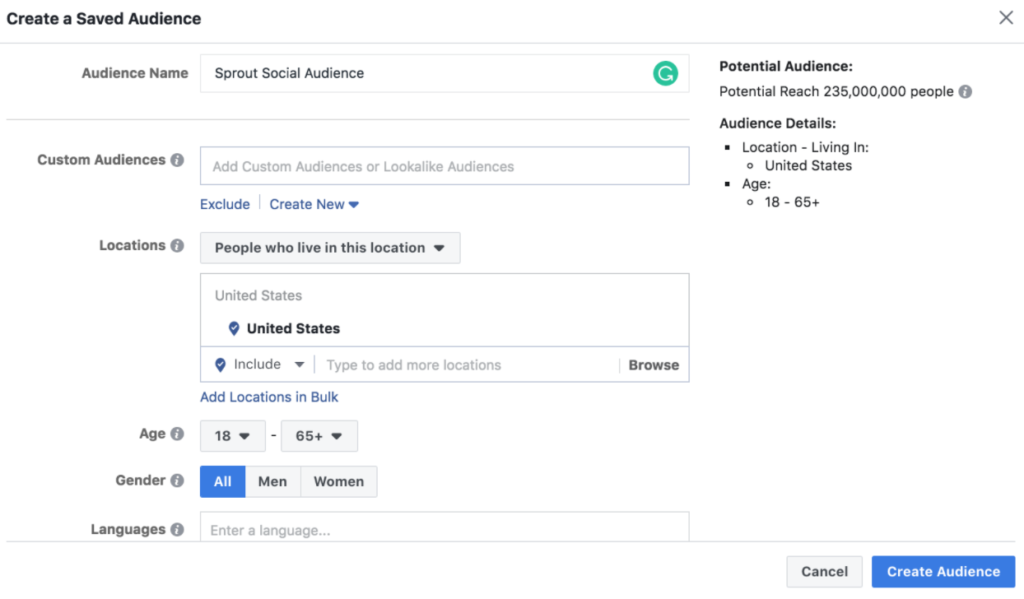
Facebook Ads offer powerful targeting options based on demographics, interests, behaviors, and more.
Identify your target audience based on your campaign objective, and create a custom audience or lookalike audience based on your existing customer data.
3. Choose your ad format:

Facebook Ads offers a range of ad formats, including image ads, video ads, carousel ads, and more. Choose the format that best suits your campaign objective and target audience.
4. Create your ad content:

Create ad content that speaks to your target audience and highlights your value proposition. Use eye-catching visuals, clear messaging, and a strong call to action.
5. Set your budget and bidding strategy:

Set your budget based on your campaign objective and target audience. Choose a bidding strategy that aligns with your objective,
Whether it’s the cost per click (CPC), cost per impression (CPM), or cost per action (CPA).
6. Launch your campaign:
Once you’ve created your ad content, set your budget, and defined your targeting, it’s time to launch your campaign. Monitor your campaign performance closely, and make adjustments as needed.
7. Measure your results:
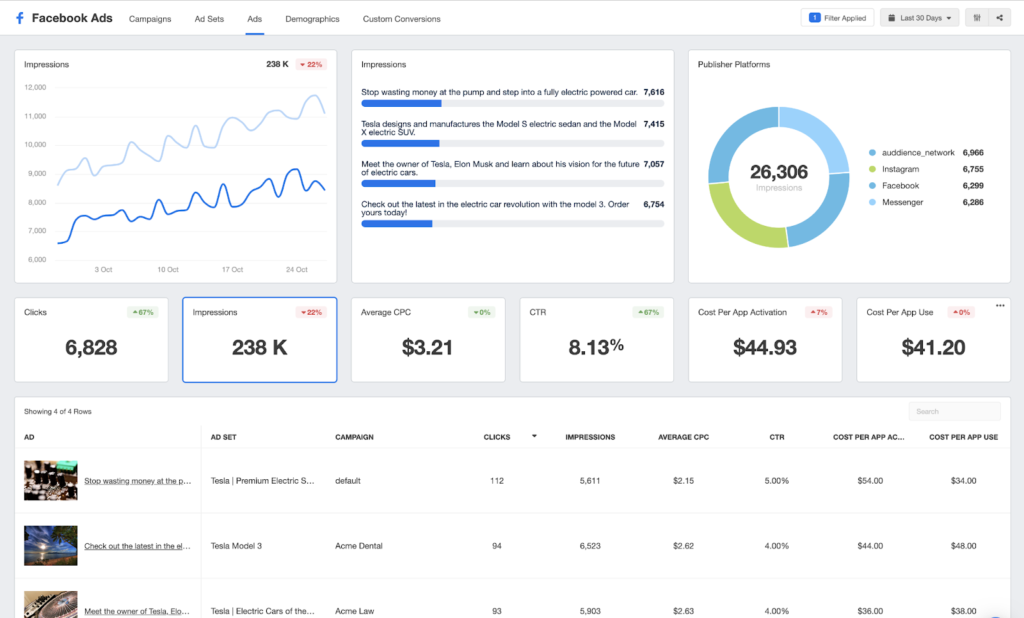
Measure the success of your campaign using Facebook Ads Manager. Monitor metrics such as reach, engagement, conversion rate, and return on ad spend (ROAS). Use these insights to optimize your campaign and improve your results.
Here is How at Insightus Digital We Help Our Clients to Increase D2C Brand Sales From Rs. 4Lac to 1.2 Cr in just 6 Months.

2. Instagram

Instagram is a highly visual platform that’s great for showcasing your tech company’s brand and products. With over 1 billion monthly active users, it’s a platform that can’t be ignored. Here’s how to make the most of Instagram:
1. Optimize Your Profile
Your Instagram profile is your storefront. Make sure it’s visually appealing and showcases your brand. Use a high-quality profile picture and cover photo that align with your brand.
Your bio should be short and sweet, with a clear call-to-action (CTA) that directs people to your website or other social media channels.
2. Use Visual Content
Instagram is all about visual content, so make sure your content is high-quality and eye-catching. Share photos and videos that showcase your products and brand. Use Instagram Stories and Reels to share behind-the-scenes content and fun, interactive posts.
3. Use Hashtags
Hashtags are a powerful tool on Instagram that can help your content reach a wider audience. Use relevant hashtags that align with your company and the content you’re sharing.
You can use up to 30 hashtags per post, so experiment with different combinations to see what works best.
Find the Relevant Hashtag
Industry-specific hashtags: Use popular hashtags related to architecture and interior design, such as #architecture, #interiordesign, and #homedecor.
Location-based hashtags: Include hashtags related to your city or region to attract local clients, e.g., #mumbaiarchitecture #interiordesignerdelhi
Trending hashtags: Monitor trending hashtags and participate in relevant conversations to increase your reach.
Creating a branded hashtag: Develop a unique branded hashtag for your business to encourage user-generated content and make it easy for users to find
4. Short-form video content: Short-form content is a fantastic method to promote your brand in 2023. Make Instagram Reels that include quick design advice, project highlights, or entertaining content which represents your brand’s personality.
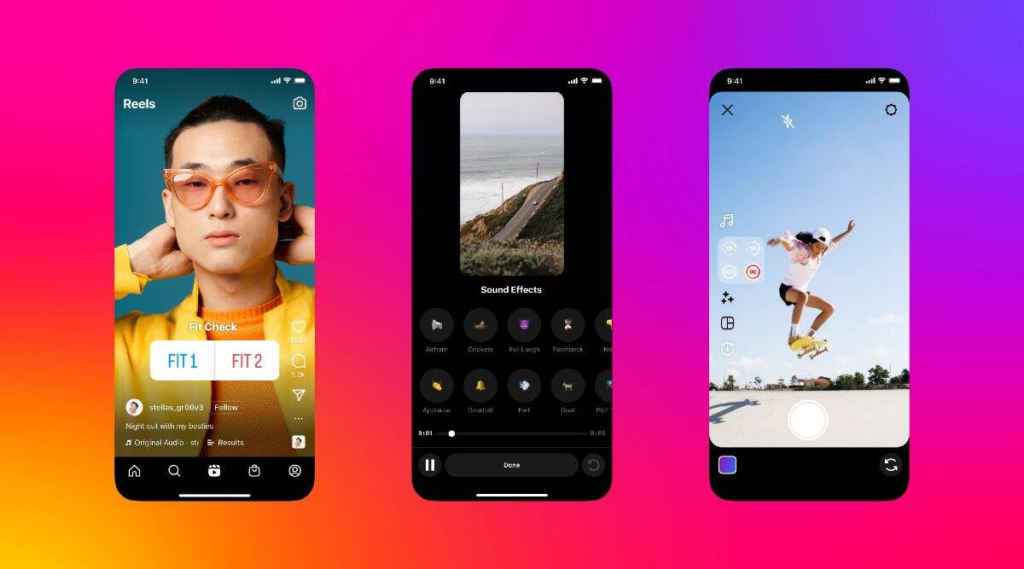
5. Run Instagram Ads
Like Facebook, Instagram offers a variety of ad formats that can help you reach a targeted audience and drive business.
Use Facebook Ads Manager to create and run ads that align with your social media strategy. Experiment with different ad formats and targeting options to find what works best for your company.
3. LinkedIn
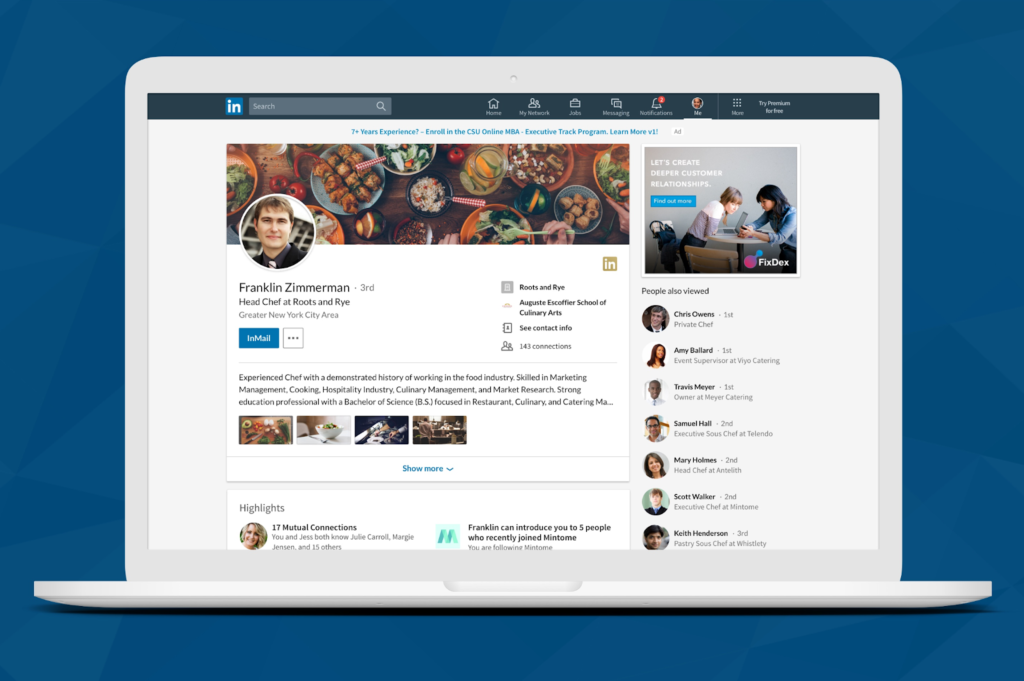
LinkedIn is a professional networking platform that’s great for B2B businesses.
It’s a platform where you can connect with industry professionals and showcase your company’s expertise. Here’s how to make the most of LinkedIn:
Optimize Your Profile
Your LinkedIn profile is your digital business card, so make sure it reflects your brand and highlights your accomplishments.
a) – Profile picture: Use a high-quality, professional-looking headshot for your profile image. Check that you’re dressed appropriately for your business and that the photo is well-lit and has a neutral background.
b) – Headline: Create a catchy headline that sums up your skills and value proposition. To increase your chances of being found in search results, use keywords related to your business.
Here are Some Headline for Digital Marketer Profile
[Digital Marketing Strategist | Boosting Brand Visibility & ROI through Data-Driven Campaigns]c) – Custom URL: Add your name or a combination of your name and occupation to your LinkedIn profile URL. This makes it simpler to share your profile and makes it appear more professional.
d) – Summary: Create a compelling and engaging summary that tells your narrative, emphasizes your skills, and highlights your personality. Include your achievements and industry-related keywords.
e) – Experience: List your job experience in reverse chronological order, detailing your responsibilities and accomplishments in each position. For readability, use bullet points and include quantifiable results whenever feasible.
f) – Recommendations: Ask colleagues, supervisors, and other business connections for recommendations. This gives your profile credibility and shows your skills and expertise from a third-party viewpoint.
g) – Skills and endorsements: List your most relevant skills and seek endorsements from your connections to bolster your expertise in those areas.
3. Share Thought Leadership Content
LinkedIn is a platform for showcasing your company’s knowledge and thought leadership. Share useful articles, industry news, and educational tools with your target audience. Use LinkedIn Pulse to share unique material that highlights your company’s expertise.
4. Connect with Industry Professionals
LinkedIn is a great platform to connect with industry professionals and build relationships. Use LinkedIn Groups to join relevant groups and participate in discussions. Connect with industry professionals and thought leaders in your industry to build your network.
5. Run LinkedIn Ads
Ads can be a great way to reach a targeted B2B audience and drive business. Use LinkedIn Ads Manager to create and run ads that align with your social media strategy.
- Set Up Your Ad Account: First, create a LinkedIn Ad Account if you haven’t already. You can do this by going to the LinkedIn Campaign Manager and clicking “Create Account.” You’ll need to enter your business name, business type, and payment information.
- Choose Your Ad Format: LinkedIn offers several ad formats, including Sponsored Content, Sponsored InMail, and Text Ads. Consider your campaign goals and choose the format that will best help you achieve them.
- Define Your Target Audience: The LinkedIn Ad Manager allows you to target your ads by several different criteria, including job title, company size, location, and more. Define your ideal target audience to ensure your ads reach the right people.
- Set Your Ad Budget: Determine how much you want to spend on your LinkedIn ads. You can set a daily budget or a total budget for your campaign.
- Create Your Ad: Now it’s time to create your ad. Choose your ad format and follow the prompts to enter your ad copy, images or videos, and other creative elements.
- Review and Launch Your Ad: Before launching your ad, make sure to review it carefully to ensure everything is correct. Once you’re happy with your ad, click “Launch Campaign” to start running your ads on LinkedIn.
- Monitor and Optimize Your Campaign: Keep an eye on your ad performance and make adjustments as needed to optimize your campaign. You can use LinkedIn’s Campaign Manager to track your ad performance and make changes to your ads in real time.
4. Twitter

Twitter is a fast-paced platform that’s great for sharing news and engaging with your target audience. With over 330 million monthly active users, it’s a platform that shouldn’t be ignored.
First, know the difference between LinkedIn & Twitter
LinkedIn is for business connections and content, whereas Twitter is for social networking and casual conversation. LinkedIn ads are more expensive and oriented towards B2B marketing.
Twitter, on the other hand, are more affordable and appropriate for both B2C and B2B marketing. LinkedIn engagement is concentrated on business relationships, whereas Twitter engagement is focused on sharing opinions and building communities. Here’s how to maximise your Twitter experience:
1. Optimize Your Profile
Your Twitter profile should be visually appealing and showcase your company’s brand.
Use a high-quality profile picture and cover photo that align with your brand.
2. Share Timely and Relevant Content
Twitter is a platform where news and trends move quickly.
Share timely and relevant content that aligns with your company and industry.
Use Twitter to share industry news, and educational Thread resources, and engage with your target audience.
3. Use Hashtags
Hashtags are a powerful tool on Twitter that can help your content reach a wider audience. Use relevant hashtags that align with your company and the content you’re sharing. You can use up to 2-3 hashtags per tweet, so choose them wisely.
4. Run Twitter Ads
Twitter ads can be a great way to reach a targeted audience and drive business. Use Twitter Ads Manager to create and run ads that align with your social media strategy. Experiment with different ad formats and targeting options to find what works best for your company.
5. YouTube

YouTube is the second largest search engine in the world and a platform where people go to learn and be entertained. With over 2 billion monthly active users, it’s a platform that can’t be ignored. Here’s how to make the most of YouTube:
1. Optimize Your Channel for Certain Topics
Your YouTube channel should be visually appealing and showcase your company’s brand.
Your channel description should be informative and provide a clear description of what your tech company does. Use keywords that align with your industry to make your channel more discoverable.
2. Share Educational Content
YouTube is a platform where people go to learn. Share educational content that provides value to your target audience. Create how-to videos, tutorials, and other educational content that showcases your company’s expertise.
3. Youtube is fully SEO based
Just like google blogs, Youtube videos are fully SEO based. If you want to rank up your video in search. Understand how to Youtube algorithm & ranking works.
You can check it on Youtube’s official channel itself
4. Run YouTube Ads
YouTube ads can be a great way to reach a targeted audience and drive business. Use Google Ads to create and run ads that align with your social media strategy. Experiment with different ad formats and targeting options to find what works best for your company.
6. Pinterest
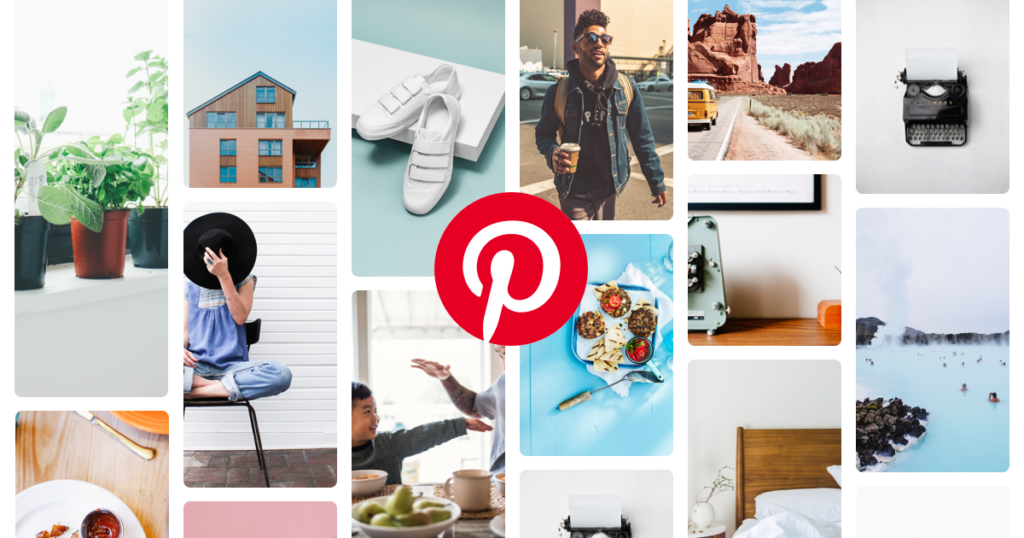
Pinterest is a visual platform that’s great for showcasing your company’s products and driving traffic to your website.
Here’s how to make the most of Pinterest:
1. Optimize Your Profile: Do Same as all Platform
2. Create Boards and Pins
Create boards and pins that showcase your company’s products and expertise. Use high-quality visuals and descriptive captions to make your content more discoverable.
3. Use Keywords
Keywords are important on Pinterest to make your content more discoverable. Use relevant keywords in your board and pin descriptions to help your content show up in search results.
4. Run Pinterest Ads
Pinterest ads can be a great way to reach a targeted audience and drive traffic to your website. Use Pinterest Ads Manager to create and run ads that align with your social media strategy.
Experiment with different ad formats and targeting options to find what works best for your company.
7. Snapchat
Snapchat is a platform that’s popular with younger audiences and can be a great way to showcase your company’s products and brand?

Here’s how to make the most of Snapchat:
1. Create a Snapchat Account :
Create a Snapchat account for your company and start building your
audience. Use a catchy username that aligns with your brand.
2. Use Snapchat Stories :
Snapchat stories are a great way to share behind-the-scenes glimpses of your company and showcase your products. Use Snapchat stories to engage with your audience and build relationships.
3. Use Snapchat Ads :
Snapchat ads can be a great way to reach a younger audience and drive business. Use Snapchat Ads Manager to create and run ads that align with your social media strategy. Experiment with different ad formats and targeting options to find what works best for your company.
Generate business & Sales From Social Media
This Strategy works for all social media platforms. To Generate Quality leads we need to build a Powerful sales funnel pipeline to fuel the business
What is a Sales Funnel?

Certainly! A sales funnel is a model that describes the steps a potential customer takes to become a customer of a business.
The sales funnel typically consists of four stages, although the number and names of the stages may vary depending on the business or industry.
Funnel Consists of 4 stages :
Awareness: This is the stage at which the potential customer becomes mindful of the company, product, or service. This stage aims to raise brand awareness and attract new customers to the company.
Interest: At this point, the potential client has shown an interest in the company and is actively researching the product or service. The goal of this step is to provide more information to the potential customer and persuade them that the company can solve their problem.
Decision: At this point, the potential customer decided to make a purchase and is considering his or her options. This stage aims to convince the potential customer to choose the company over competitors.
Action: The final step is when a potential customer converts to a customer by making a purchase. The goal of this step is to provide the customer with a simple purchasing process.
Step 01: Generating leads through Instagram

Compelling call-to-action (CTA): Include a clear CTA in your captions and bio, inviting users to sign up for your newsletter, download a free resource, or book a consultation.
Gated content and lead magnets: Offer exclusive content, such as e-books or webinars, in exchange for users’ contact information, helping you build a list of potential clients.
Want to create High- Quality leads
Here is a Proven Method: How to Create High-Quality Leads With Organic Traffic. Step 01 …
Step 02: Nurturing the leads
Email marketing: Use email campaigns to stay in touch with your leads, sharing valuable content, project updates, and promotional offers to keep your brand top of mind.
Retargeting ads: Run retargeting ads on Instagram or other platforms, targeting users who have engaged with your content or visited your website, encouraging them to take the next step in the sales to funnel.
Step 03: Converting leads into clients/Costumer
Personalized follow-ups: Reach out to your leads with personalized messages, addressing their specific needs and preferences.
Tailored sales presentations: Prepare customized sales presentations for potential clients, showcasing how your services can address their unique design challenges and aspirations.
Bottom Line :
Social media is a powerful tool for companies to reach and engage with their target audience. By using the right social media platforms and strategies, you can grow your following.
Increase engagement, and drive business.
Remember to always keep your target audience in mind and provide value with your content. With a solid social media strategy in place, your company can thrive in 2023 and beyond.
Frequently Asked Questions
Create a social media presence for your business on all relevant platforms.
Share high-quality content regularly.
Use hashtags and keywords to increase your visibility.
Run paid ads to reach a wider audience.
Encourage engagement from your followers by asking questions.
Collaborate with influencers or other businesses.
Monitor your social media metrics to track your progress.
Post Consistently.
Create Engaging Content.
Use Hashtags.
Collaborate with Others.
Use Paid Advertising.
Engage with Your Audience.
Sponsored posts
Affiliate marketing
Selling products
Digital products
Freelance services
Social media management
Social media is a powerful tool for reaching potential customers, but simply having a presence on social media is not enough to drive sales.


